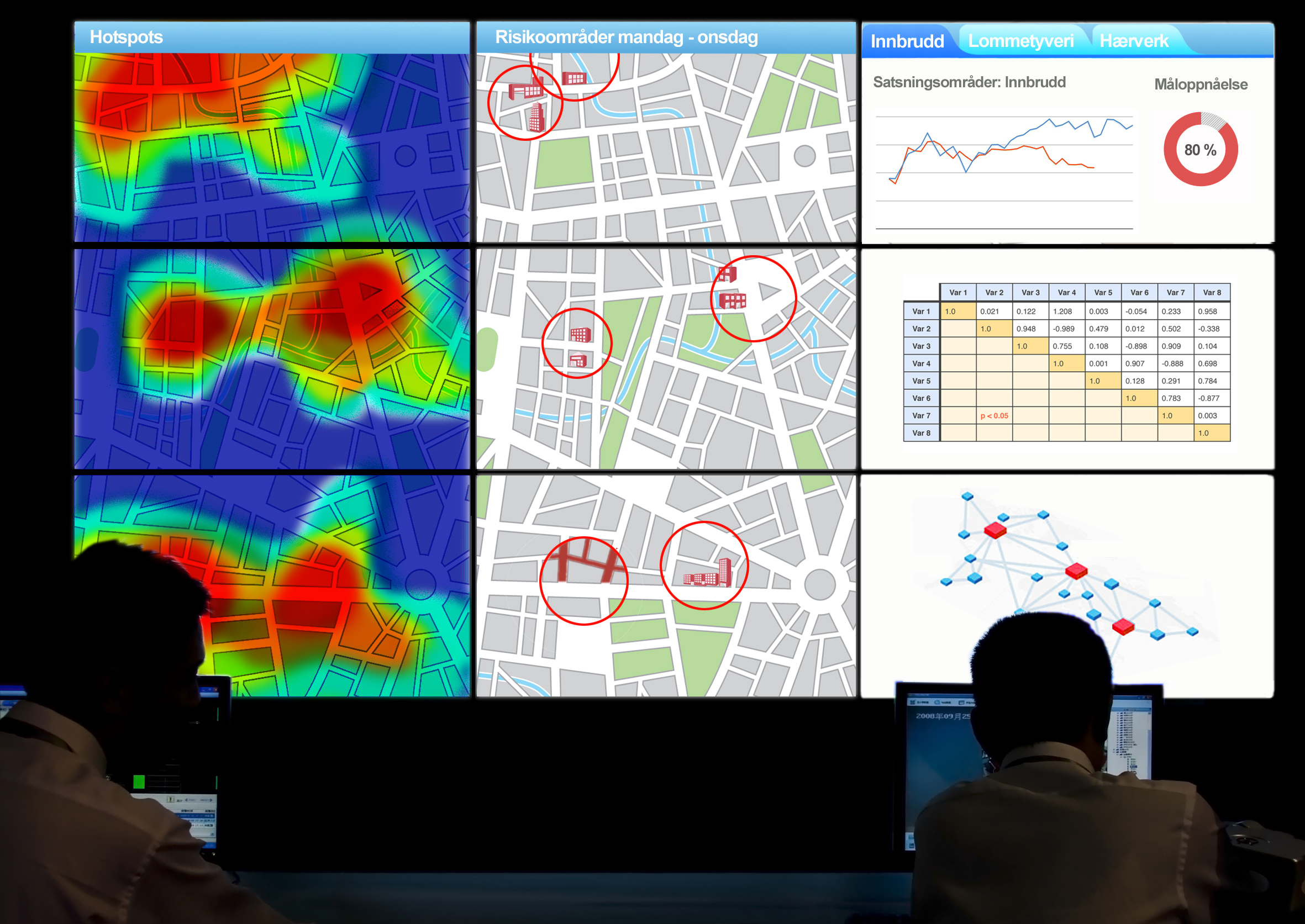The Rise of Predictive Policing


One of the basic principles that drives today’s tech industry is the unfaltering belief that any service can be improved by amalgamating data and then applying it appropriately. The police service is no exception. Over the last few years there has been a gradual implementation throughout the US and UK of what is known as ‘predictive policing’. Predictive policing uses data from past crimes, such as where it happened and what time it took place, as well as what type of crime it was, to inform police about crime hotspots. Essentially, it is about getting patrol cars to areas where crime is most likely to happen before it has the chance to happen. If this seems reminiscent of the world of ‘pre-crime’ as depicted in Minority Report, it’s because it is.
It all started with an American criminologist names Craig Uchida. Uchida was an obsessive baseball fan and a big admirer of Bill James, the man who created sabermetrics – the scientific analysis of baseball data in order to predict winners and losers, as depicted in the film Moneyball. But Uchida saw no reason why sabermetrics should only be used for baseball. In fact, he saw a lot of similarities between the baseball world and the world of police work. As he put it “Baseball collects lots of information about everything. You can create different algorithms for different baseball players and how they perform” – the same could be done for crime.
The data for the system that Uchida envisioned was already there – police records tracked crime types, locations, times, as well other relevant information – it just needed the new technology to give it shape, meaning, and the ultimate goal… foresight.
In 2008 Uchida was invited out to Los Angeles to work with Sean Malinowski, the project manager for the LAPD’s predictive-policing initiative. It was there that he also met Jeff Brantingham, with whom he formulated the ‘environmental crime theory’, which looks at the conditions that tend to cause or prevent crime. From their research, a new kind of crime prevention method began to evolve – one that used predictive patterns in the same manner a meteorologist might look at atmospheric pressure to predict the next fall of rain.
The result was PredPol, founded by Jeff Brantingham and George Mohler. PredPol was the first company to use sophisticated algorithms to help predict crime. They began by simply gathering crime statistics and feeding them into Exel sheets, along with their geographical coordinates. They then added a map with hot boxes. They fed their findings to the LAPD and other police departments, and as more information was collected and added their algorithms grew more accurate. The PredPol method is not about chasing yesterday’s crime, it is about using yesterday’s crime to catch tomorrow’s criminals. If a house gets robbed, then PredPol knows that statistically speaking the chance of a neighbors’ house being robbed goes up; the chance of the next door neighbor’s house being robbed goes up most of all. Experienced police might know this instinctively, but with PredPol they can have all the latest figures at their fingertips, indicating exactly where they need to be at any given time.
As of last year, up to 60 US city police departments were using PredPol and the results so far have been positive, and in some cases they have been dramatic. A study found that PredPol successfully predicted – and helped prevent – twice as much crime as human crime analysts did. According to PredPol, officers who spent only 5-15% of their shifts in the red boxes designated by the PredPol system stopped more crime than they would have using their own knowledge.
With such dramatic drops in crime it is no wonder that the popularity of predictive policing software is growing so fast. As well as PredPol there are many other competitors fighting for the position of best crime predictor. A Silicon Valley company called HunchLab has created software that not only tracks crime type, time and location, but also more obscure data, such as the impact of businesses, churches, and weather patterns on criminal activity – adding a more psychological framework to their predictive system. The more information known about the environment surrounding a crime, as the theory goes, the more likely it is that similar crimes can be predicted in the future.
However, despite the great success of predictive policing, there is one fatal flaw that worries many of its critics. The danger is that the technology may be infringing on civil liberties by continuously targeting underprivileged areas of cities with high minority populations. After all, predictive policing isn’t a crystal ball; patterns are likely to reoccur, but expecting them to and lying in wait is something else.
It is said that everything has some form of “inherent vice”, a tendency to deteriorate because of the fundamental instability of the components of which it is made. With predictive policing the inherent vice is the continuous loop of targeting and reinforcing it generates. If a neighborhood is identified by PredPol as a crime hotspot, police are more likely to go there and more likely to make arrests there, consequently skewing police records in a distinct bias against that neighborhood, which then gets fed back into PredPol.
Another issue is the lack of transparency in how the algorithms are created. Currently, there is a veil of mystery around how the algorithms are created. Police who use algorithms in software like PredPol are unaware of the reasoning that went into their construction. There is worrying lack of legal oversight involved in the entire system. Some form of external audit needs to be introduced.
Despite these problems yet to be resolved, police departments that have adopted the new technology are delighted with the results. The use of software like PredPol and HunchLab are becoming less like an experimental practice a more like the new standard in modern policing. Indeed, it is hard to see any backward steps being taken. The adoption of new technologies has always been a part of policing, and the transitions have always been accompanied by some turbulence; predictive policing is just the latest in the line.
When the emergency phone number was introduced in the 1960s it turned the police from being a preventative presence to being a reactive one. The telecommunication technology meant that police could be dispatched immediately to a crime scene, alleviating the presence required on patrol but adding to the public demand for police due to their new-found accessibility. This form of reactive policing worked better in preventing bigger crimes, but for minor public order offences it wasn’t as good as the old way. There needed to be a new way of managing patrol to make it more efficient.
Predictive policing began to gain traction as a concept when the “broken window theory” was used by police in New York. The theory was that if small crimes appeared to be tolerated in a neighborhood, then bigger crimes would inevitably follow. So the NYPD implemented a total crackdown on petty crimes, such as graffiti and turnstile hopping. They focused in particular on known problem areas that were identified by a crime analysis and mapping system called CompStat.
Predictive police software like PredPol and HunchLab are essentially just updated versions of CompStat. Just like with broken window theory, problem areas are targeted and softer offences are prevented so that crime doesn’t get the chance to escalate. So, predictive policing isn’t exactly the new science-fiction concept it is often made out to be. It is a method of policing that has been around for decades already. The difference now is that the technology has made it much more efficient. It is the old policeman’s instinct for crime, but powered by databases of statistics and complex algorithms. It is the future of policing.


